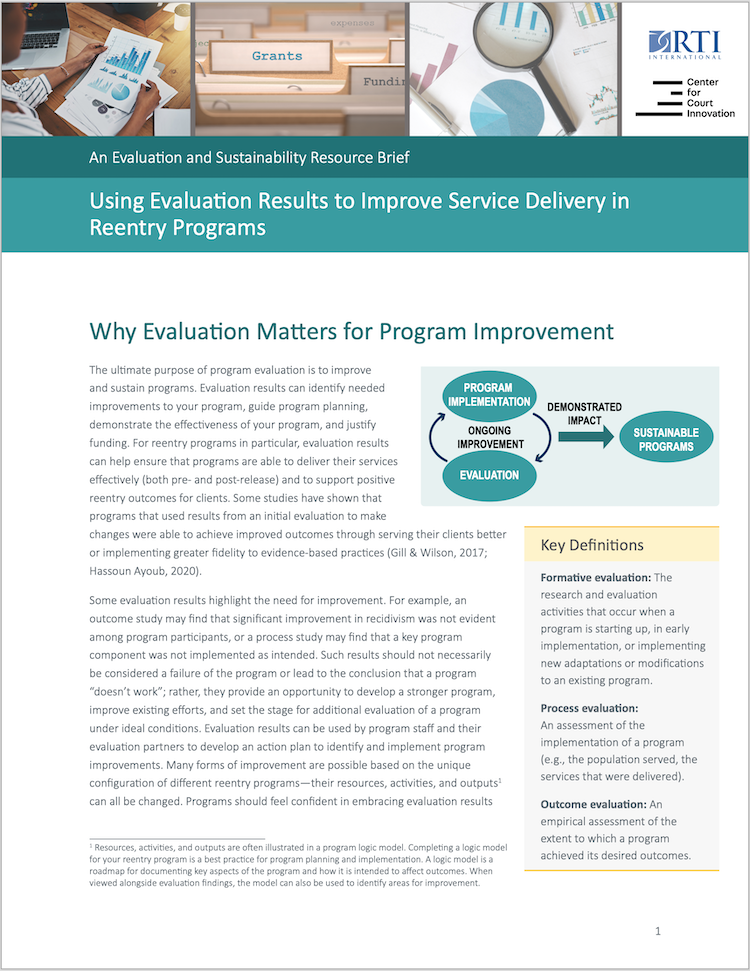Resource Brief: Using Evaluation Results to Improve Service Delivery in Reentry Programs
Topics:
Evaluation and Sustainability
Program Quality and Performance Measurement
Second Chance Month
 This resource brief from the Evaluation and Sustainability Training and Technical Assistance (ES TTA) team at RTI International and the Center for Court Innovation, describes two primary strategies for using data and evaluation results to improve program and service delivery.
This resource brief from the Evaluation and Sustainability Training and Technical Assistance (ES TTA) team at RTI International and the Center for Court Innovation, describes two primary strategies for using data and evaluation results to improve program and service delivery.
When an evaluation accompanies program startup or ongoing implementation, formative and process evaluation data can be used in real time to inform and improve ongoing implementation. When an evaluation is complete, both process and outcome evaluation results can help change, improve, expand, or replicate the program.
For each strategy, data sources, examples, and recommendations are provided to leverage program evaluation for reentry program improvement.
View the brief (PDF)



